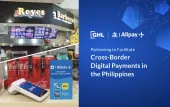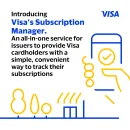
Beyond Apple Pay: Which new digital wallets are gaining ground in Asia?
Find out from Standard Chartered, OCBC, EY, Krungsri, and TEB.
When Asian consumers open their wallets ten years from now to pay for a pair of shoes or a week’s worth of groceries, the question they will ask will have likely changed from “Which card should I swipe?” to “Which button should I press?” Digital wallets, accessible through smartphones and other mobile devices, should emerge as a predominant method of payment in the coming decade, according to analysts, and with it the rapid decline of physical credit cards.
Instead of the plastic cards that have for so long assisted consumers in paying for purchases, the average Asian’s wallet will be increasingly filled with digital products like Apple Pay, a mobile payment and digital wallet service that lets users make payments through their iPhones and, in the future, iPads and Apple Watch-compatible devices.
“We are expecting digital wallets to lead the next revolution in the rapidly growing world of payments,” says Desmond Tan, head of group lifestyle financing at OCBC Bank.
“With such a high penetration rate of smartphones’ usage, we know that it’s crucial to get these payment services into the hands of our customers – literally. Hence, it was an easy decision to embrace digital wallets, be it Apple Pay or Samsung Pay.” Tan reckons OCBC will be working with even more digital wallet providers in the future, especially if it would result in a higher level of convenience for customers.
“We always aim to provide the best payment solutions to our customers. As one of the key pioneers which actively advocates contactless payment methods, we are certain that the utilisation of digital wallets will go a long way in making payment processes a whole lot easier for our customers to carry out daily transactions,” says Tan. OCBC is leading the charge in contactless payments with 50% growth in the area, and the highest number of contactless transactions over the past year.
Disappearance of bank brands
The forecasted rise of digital wallets in Asia has far-reaching, and even grave, consequences for banks. Bank brands might become less relevant to consumers as bank Visa and Mastercards lose their popularity in favor of products similar in nature to Amazon One Click, Apple Pay, PayPal and Starbucks apps with similar or enhanced functionalities, says Keith Pogson, senior partner, Asia-Pacific financial services at EY.
“In the physical world, the actual payment instrument could be replaced by the likes of start-ups such as ModoPayments, a digital payments hub taking monetary value from just about any source and delivering it to just about any destination, Cartwheel app by Target for coupon offers, and of course Apple Pay,” says Pogson.
Banks that do not want to drown in the digital wallet wave and instead surf to continued relevance must adopt a new consumer payments proposition: One that is hinged more on reliable, cheap and memorable service. “What this means for banks is that they need to become an extremely reliable, low unit cost, trustworthy utility for payment origination and processing,” says Pogson. “They have to also ensure ‘top card in a wallet’ thinking not only applies to day-to-day spending by customers but also be that default card used in ecommerce payment gateways.”
He adds that banks should be more creative with their customer rewards programs, breaking out of the run-of-the-mill points systems. The goal of these new rewards programs designed for digital wallet users is to create other value differentiator properties.
Fintechs and mobile wallets
Technology will be a powerful driving force of the incoming digital wallet era, according to analysts, which is why banks are now forging alliances with financial technology or fintech companies. Pogson observes an outburst of collaborations between banks and payment fintech firms either through outright acquisitions, corporate venture units, incubation and mentorship, and sponsorship and partnerships.
Banks are looking to discover disruptive solutions and foster innovation, such Bank of China (BOC) partnering with China’s phone manufacturer Huawei Technologies in March to allow card holders to use Huawei Pay’s near-field communication or NFC and enable payments through their smartphones.
Pogson also notes how in June, Google launched Android Pay, a mobile payment and digital wallet service in Singapore, allowing credit and debit card users from five major banks – POSB, DBS Bank, OCBC Bank, UOB and Standard Chartered – to use wireless NFC for payments at 30,000 retail points.
“We are enabling contactless cards for clients in markets which are showing a high uptake in NFC-based transactions. By the end of the year, these cards will be available in major markets across our footprint,” says Chris de Bruin, global head of retail products and digital for Standard Chartered. “This year in Hong Kong, we became the exclusive digital banking partner of Octopus, offering O! ePay mobile payment services to our clients. O! ePay is the first Octopus network-based mobile payment service to provide person-to-person payments and instant fund transfers with the Octopus card,” adds de Bruin.
Banks are starting to see that collaboration instead of competition with fintech will be their ticket to triumph, not only in the payments space but also in many other areas of operation. Pogson argues that there is simply more to gain working with fintechs than trying to beat them head on. “We see fintechs and banks co-existing (or attempting to co-exist) symbiotically to create stronger financial systems. This includes not just with the payment start-ups, but strategic partnerships with e-commerce firms, security and enterprise IT, and big data analytic providers,” says Pogson.
“Fintechs are a great resource for banks to truly innovate and inject fresh vision into their cultures, while banks provide fintechs with immediate access to existing customer bases and distribution infrastructure,” says Pogson.
Other collaborations
Turkish Economy Bank (TEB), for example, is forging numerous fintech partnerships to roll out cutting-edge services in a country with a relatively mature digital wallet and contactless payments environment with around 142,000 contactless payment points. “We think that fintech companies are not our competitors. On the contrary, we prefer to make collaborations to fintech companies,” says Gokhan Mendi, head of retail and private banking at TEB, the first bank in Turkey to adopt cloud-based contactless payments using host card emulation technology.
TEB is collaborating with a number of fintech players such as Monitise, for the improvement of its mobile banking app since 2012. It also teamed up with Metamorfoz, a local fintech firm, for the integration of contactless payment services. TEB has been building up a suite of services that enable customers to spend a whole day without their leather wallets. “Customers can make payments from groceries to cinema in several stores, and even withdraw money with a QR code,” says Mendi.
Meanwhile, in Thailand, Krungsri is also going full throttle with cashless payment initiatives, headlined by their NFC mobile payment service for all Tesco Lotus cardholders.
Thailand already has a high smartphone penetration rate, which has emboldened the bank to set up a mobile payments facility for customers who prefer not to use cards or cash, says Thakorn Piyapan, head of Krungsri consumer group and head of digital banking and innovation at Bank of Ayudhya (Krungsri). “In the next five to 10 years, digital adoption should be the norm for all Thai people,” says Piyapan, citing the government’s push for a national e-payment scheme that will transform it from a cash-based society to a cashless one.
“By 2026, 90% of Thai population is expected to have internet access. Everyone will be using smartphones, while people in remote areas will benefit from easier access to financial services via mobile internet,” he adds.
















 Advertise
Advertise






